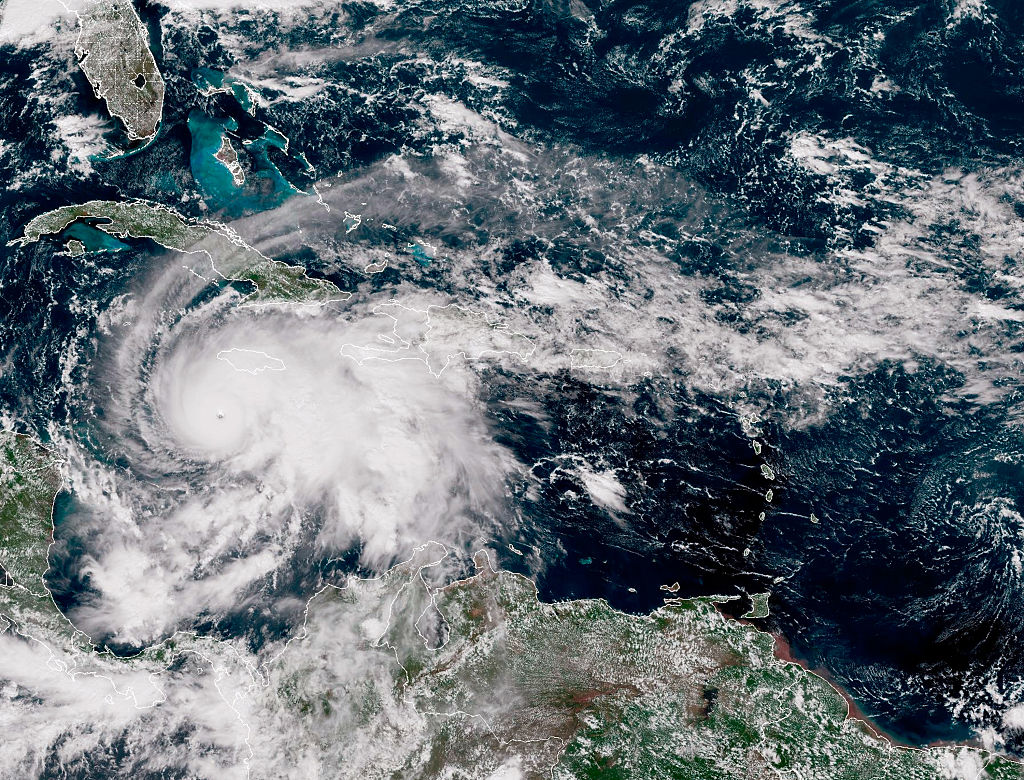Hurricane Melissa is expected to make landfall in Jamaica on Tuesday, bringing several feet of rain and flooding to the island over the coming days. The Category 5 hurricane is the most powerful storm of the 2025 Atlantic hurricane season and the strongest storm to hit Jamaica since Hurricane Gilbert in 1988.
It also marks the first time in 20 years that three or more Category 5 hurricanes have developed over the Atlantic Basin in one season. The last time was in 2005, when Hurricanes Emily, Katrina, Rita, and Wilma all reached Category 5—breaking a record.
In order to form, Category 5 hurricanes require a “perfect storm” of factors, says Charles Konrad, professor at the University of North Carolina at Chapel Hill. “Typically, there’s going to be atmospheric or geographic factors that may be working against its rapid intensification,” he says. “Everything’s got to line up perfectly for a tropical system to rapidly develop and become a Category 5 system.”
But that process of rapid intensification is becoming more common. A 2023 study found that Atlantic hurricanes in the past two decades are more than twice as likely to intensify rapidly from minor storms to powerful and catastrophic events than they were from 1971 to 1990.
Category 5 storms, which used to be rare occurrences in the Atlantic Ocean, are becoming more common. Prior to Hurricane Melissa, there had been 44 Category 5 hurricanes in the Atlantic Basin since 1924, according to NOAA’s historical database. But 13 of those have taken place since 2016. The 2025 hurricane season marks the fourth year in a row that there has been at least one Category 5 Atlantic hurricane, and 2024 saw two storms reach Category 5 status.
The past few years have seen record-shattering global sea surface temperatures, which helps strengthen storms. “Generally in the Atlantic, for these hurricanes to happen, we need warm sea surface temperatures and the winds above the storm to be very weak,” says Kristen Corbosiero, professor at the University of Albany. “But in recent years, we’ve had extremely warm waters and these weaker winds above storms, which has allowed them to get stronger.”
Hurricane season is also stretching on longer, and causing more intense storms that are able to hold more water.
“We’ve had more Category 5 storms in recent years primarily because of the warmth of the water and the length of the season,” says Corbosiero. “We’re getting longer hurricane seasons because the waters are staying warmer for a longer period of time.”
Experts note that another reason it seems as though we’re seeing stronger storms more frequently than in decades past could simply be that our ability to track them has improved. “There’s the caveat that when we go way back in our history, we didn’t have satellites and so our sensing abilities were not nearly as great,” says Konrad.
But there’s no denying that, due to climate change, more intense hurricanes are likely to become the new normal.
“With anthropogenic climate change, the models that project into the future suggest that a higher proportion of the hurricanes will end up being major hurricanes, which is Category 3 or stronger,” says Konrad. “This year is consistent with that.”

